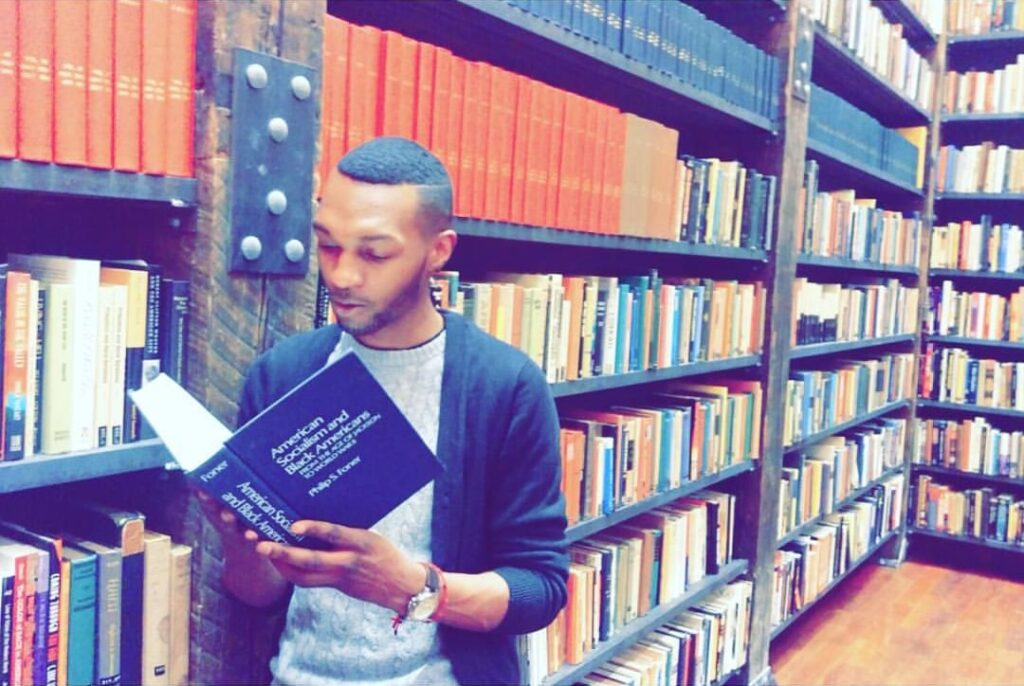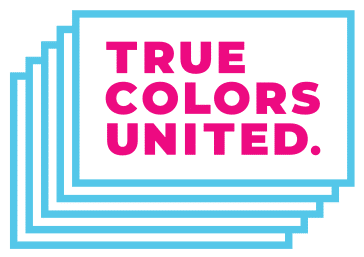
The following is a guest post by Jawanza James Williams, writer, advocate, and 2016 40 of the Forty honoree.
I hear the voices of centuries past, singing in chorus, a language my tongue can never speak, but I feel it deep in my bones when black blood wets the earth, and another opens their mouth, from which crawls the parts of revolution- words for some, movements for others, but all, demanding dignity.
I can’t remember a specific point in time that I became aware of my pre-determined space on the hierarchical scale of social legitimacy. That is, I can’t articulate the moment that I became aware of the existential ransom on my black queer identity… on my black queer body. I’ve experienced all manner of oppression: inadequate health care, housing instability, economic exploitation, anti-black racism, homophobia, to name a few. But it was not until I became involved in social justice work that I realized there are degrees of otherness that have been wielded against many of us, even in movements for liberation. People who identify, or are perceived as LGBTQ have been systemically, and socially left out of the narrative of movement building, and therefore, left out of the collective consciousness of society, amended from the annals of history. The absence of non cis-male heterosexual leadership archived in collective memory is the reason you have to be politically conscious to know who Bayard Rustin is, it’s the reason you only think of Malcolm X, King, and Parks when you think of the Black Freedom movement of the 20th century.
When a movement’s hope and resilience are tucked into this tiny space fixed between the rigid walls of patriarchy, white-supremacy, and heteronormativity, we are often presented with a masculine savior. King and Malcolm X are convenient figures for this discussion, as they are the faces that the mainstream collective conscious conjures up, overwhelmingly, in America’s historical thought as it relates to black struggles for freedom. Of course, I deeply admire the contributions that these figures have made to my life and the lives of all people. But this relegation of movement to the individual bodies of charismatic leaders minimizes our collective understanding of freedom. As we move closer to absolute freedom, which, as Paolo Freirie articulates in Pedagogy of the Oppressed, is the ability of every individual to experience their fullest humanity, with dignity, the way in which our movement moves, sounds, looks, and feels, is comprehensive, and increasingly, inclusive. This is not to say that someone who does not experience marginalization (or to the degree that another does) should lead movements of liberation for the most marginalized, but with.
We often discuss the monumental success of the Civil Rights Movement in the United States. When I was in grade school, especially for Black History Month, the instructor would have us read of and watch black and white videos depicting harrowing tales of non-violence, the mass brutalization and dehumanization of black people, many of whom employed King’s “disciplined love.” I recall grainy frames of people mauled by police dogs, on the receiving end of water cannons, pushed to the pavement, shoved to the darkest ends of the human condition. I learned of and often thought of the Little Rock Nine, and the military might it took for them to integrate a high school, against the mob of white civilians determined to keep them out. And though my instructors failed to tell me of COINTELPRO, even if Malcolm and King were killed, I was supposed to be happy and wave my American flag, as my country had learned a lesson, and because my classmate was white, I was free. The struggle was over. I left grade school, somehow (asleep I suppose) believing that structural and attitudinal racism were relics of an uncivilized past, only to realize, especially when Trayvon was murdered, that an end to the assault on black bodies was on the agenda of civil rights leaders. And yet, here we are, counting the deaths of black people by state-sanctioned police virtually every 28 hours, and rallying for justice, typically to no perceivable, or tangible end. I think there are two reasons for this reality, in the wake of all Black Freedom movements: the pervasive and deeply integrated legacy of white-supremacy, but also, the omitting of women, queer people, and others that are too far removed from legitimacy and power in a patriarchal paradigm.
James Baldwin, a black queer American writer, is one of the greatest writers to have ever been published. Unbeknownst to me until well after my university education, he was also a highly regarded figure during the civil rights era, with a voice that championed a call for freedom that, to me, looks more like the continuation of movement for liberation manifested in the Black Lives Matter movement, founded by three black queer women, Alicia Garza, Patrisse Cullors, and Opal Tometi. Baldwin is conveniently left out of the mainstream discussion of public intellectual contributions. You can voluntarily discover Baldwin on your own because of access to literature and services like internet search engines, but perhaps it serves our society better to be fully comprehensive of the figures we encourage public school students to study. I can only imagine the hope it would have provided me had I been I exposed to a figure who looks and identifies in ways that I do, even if I lacked the language to describe myself as such. Why did I not learn of Baldwin in the same context of other prolific leaders during the civil rights movement? Is it because he was a queer man? Is it because he was unapologetic enough to write Giovanni’s Room? I think this is a foreshadowing example of why movements can fail to succeed. When we leave out those whose very fabric of being are quintessentially different relative to the dominant narrative (or more, the definitively oppressive rules of society), our definition of freedom is incomplete, and therefore, inevitably unable to totally dismantle said oppression.
The founders and many conscientious leaders of the Black Lives Matter (BLM) movement have learned from the mistakes and shortcomings of previous Black Freedom struggles, namely the Civil Rights movement. BLM has focused primarily on the murder of black people by the police and the movement has already been successful at elevating the severity of this intentional epidemic, beaming the message of equality and the right to life for black people into every home in the U.S. and reverberating waves of solidarity throughout the world, from Palestine to Japan, from Ferguson to Brooklyn, and beyond. The most significant marker of difference when we compare BLM to the Civil Rights movement is the malleability of the movement. BLM is founded on principles that are fixed, yet allow for the presence of a wide-spectrum of people to stand in authoritative agency, and to be legitimate. More specifically, someone like myself, a black queer man, can lead a BLM march – whereas, in other movements, because of a respectability politic rooted in white-supremacy and misogyny, I could not do the same, for fears (regardless if they’re mine or not) of ruining the validity of the movement. I think this is also a reflection of digital platforms being widely available, but still, the movement is morphing in ways that cannot be contained. Because the leadership of the movement is not reduced to individuals of limited identity (that is, the charismatic, cis-gender heterosexual male, who’s life and capacity is limited), but is instead open and ever-unfolding, BLM allows for liberation to be reached for through the wondrous complexity that humanity truly is. The movement cannot, and will not, die.
The annual 40 of the Forty list highlights 40 lesbian, gay, bisexual, transgender, queer, and questioning youth who have experiences with homelessness and provides them opportunities to be engaged in our work nationally and within their home communities. Check out the full list here!
